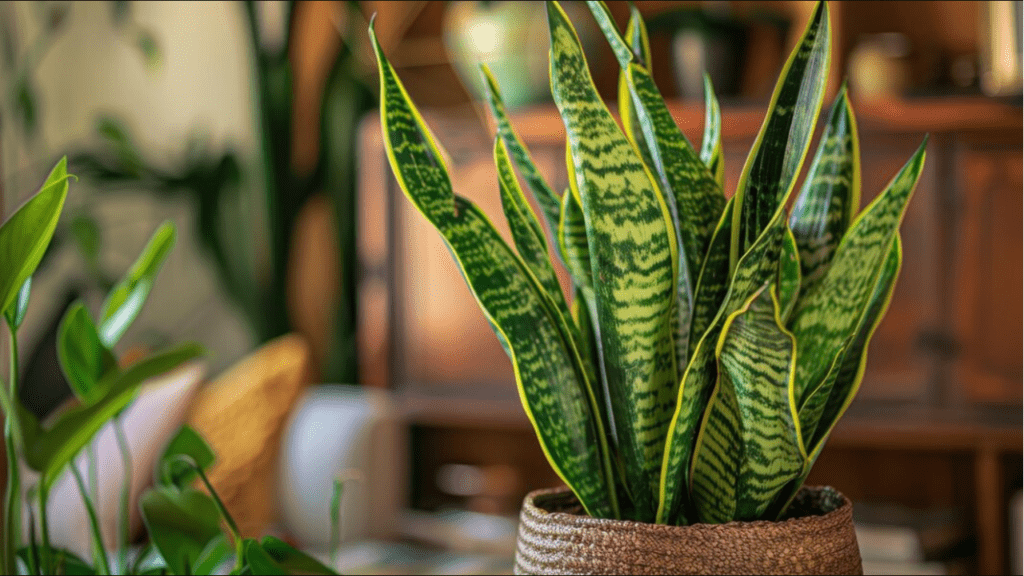
Transform Your Garden with Outdoor Snake Plants: Tips and Tricks
Outdoor snake plants, also known as Sansevieria, are a popular choice for enhancing outdoor spaces. These stunning plants not only add a touch of greenery and beauty to your outdoor area but also come with a range of benefits. In this article, we will explore the benefits of adding outdoor snake plants to your outdoor space and provide tips on how to care for and maintain these stunning plants. Whether you have a large garden or a small balcony, outdoor snake plants can add a touch of natural elegance to your outdoor space. Let’s dive in and discover how you can enhance your outdoor area with these beautiful and low-maintenance plants.
Table of Contents
ToggleBenefits of Outdoor Snake Plants
While snake plants, also known as mother-in-law’s tongue, are popular indoor plants prized for their ease of care, some varieties can thrive outdoors as well! Here’s a closer look at the many advantages of incorporating these tough and adaptable succulents into your outdoor space:
Low Maintenance and Durability:
- Perfect for busy homeowners or gardening novices.
- Thrive on neglect – ideal for forgetful waterers.
Architectural Interest and Year-Round Appeal:
- Upright, sword-like leaves come in various shades of green, some with striking variegations.
- Modern and elegant aesthetic enhances any outdoor space.
- Evergreen nature provides year-round visual interest.
Adaptability to Various Sun Conditions:
- Certain varieties tolerate full sun, while others prefer bright, indirect light.
- Research variety needs to ensure a perfect fit for your desired location.
- Adds design flexibility for sunnier or shadier areas of your garden.
Drought Tolerance:
- Succulent wonders that store water in their leaves.
- Excellent choice for drought-prone areas or forgetful waterers.
- Reduces watering needs and overall maintenance requirements.
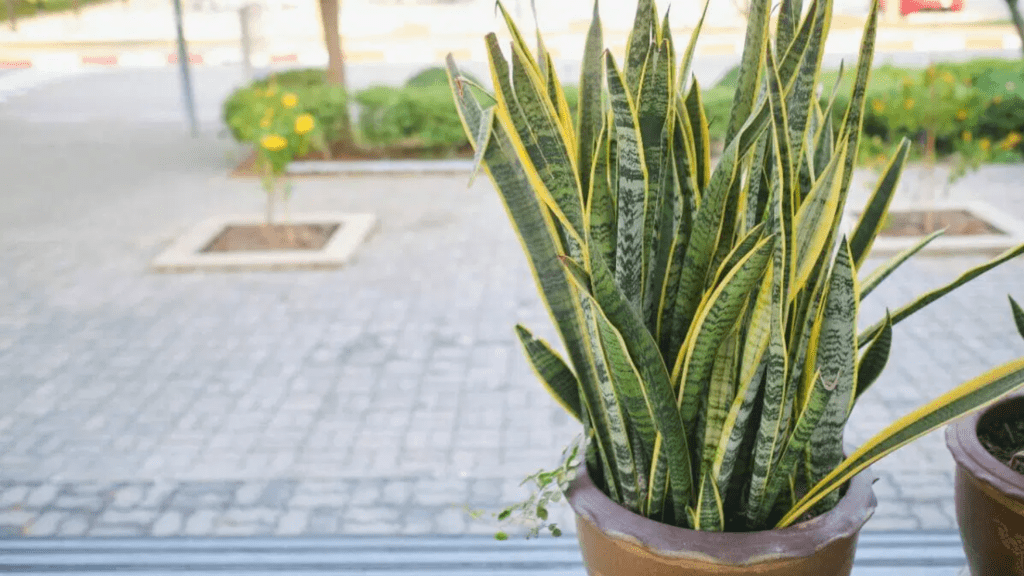
Choosing the Right Outdoor Location
When planting outdoor snake plants, it’s essential to choose the right location. It prefers partial shade to full shade.Consider planting them in well-draining soil to prevent waterlogging, and avoid areas prone to standing water. Whether you’re planting them directly in the ground or in containers, ensure they have enough space to grow and spread out.
Important Considerations:
- Climate: While snake plants are generally heat tolerant, extreme temperatures can be detrimental. If you live in a region with scorching summers, consider providing some afternoon shade for your sun-loving varieties.
- Reflected Heat: Avoid placing your snake plant directly next to heat-radiating surfaces like brick walls, especially in hot climates. The intense heat reflection can scorch the leaves.
- Wind Protection: While snake plants are tough, strong winds can damage their leaves. If your garden is exposed to frequent high winds, choose a sheltered location or use container planting to allow you to move the plant during windy periods.
Remember: When in doubt, it’s always better to err on the side of less sun. Snake plants can tolerate lower light conditions better than excessive direct sunlight, especially during the hottest parts of the day. By carefully considering your chosen variety’s needs and your garden’s specific light conditions, you can ensure your outdoor snake plant thrives in its new location.
Varieties of outdoor snake plants
there are two main varieties of snake plants that do well outdoors:
- Cylindrical Snake Plant (Sansevieria cylindrica): This unique variety features upright, cylindrical leaves with a pointed tip and comes in green or variegated options.
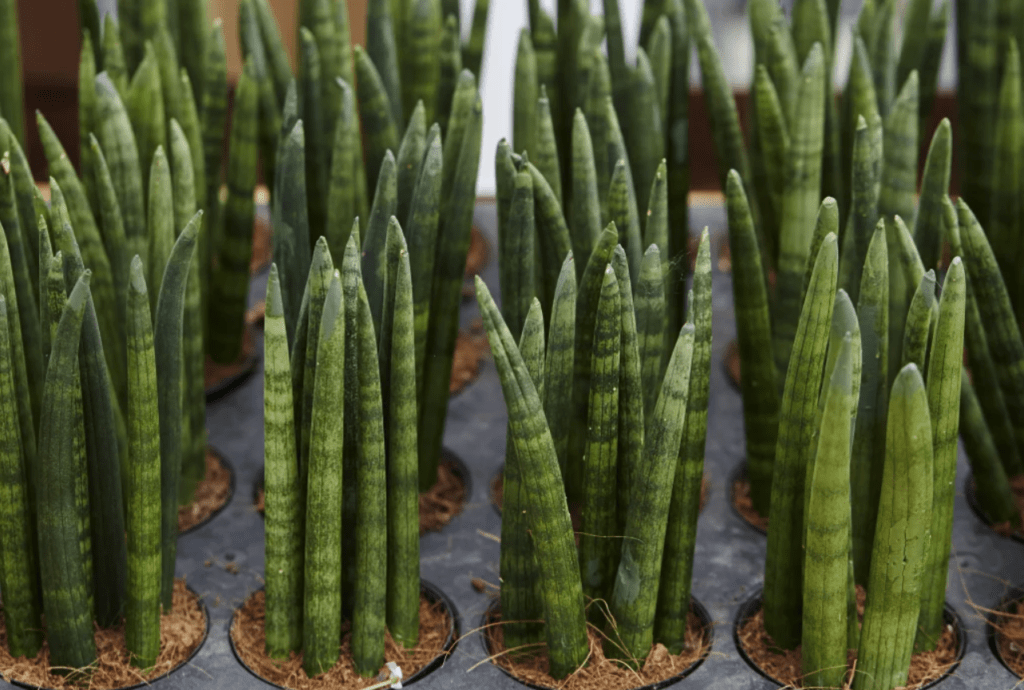
- Zeylanica Snake Plant (Sansevieria zeylanica):This low-growing variety boasts flat, sword-like leaves with a distinctive wavy edge.
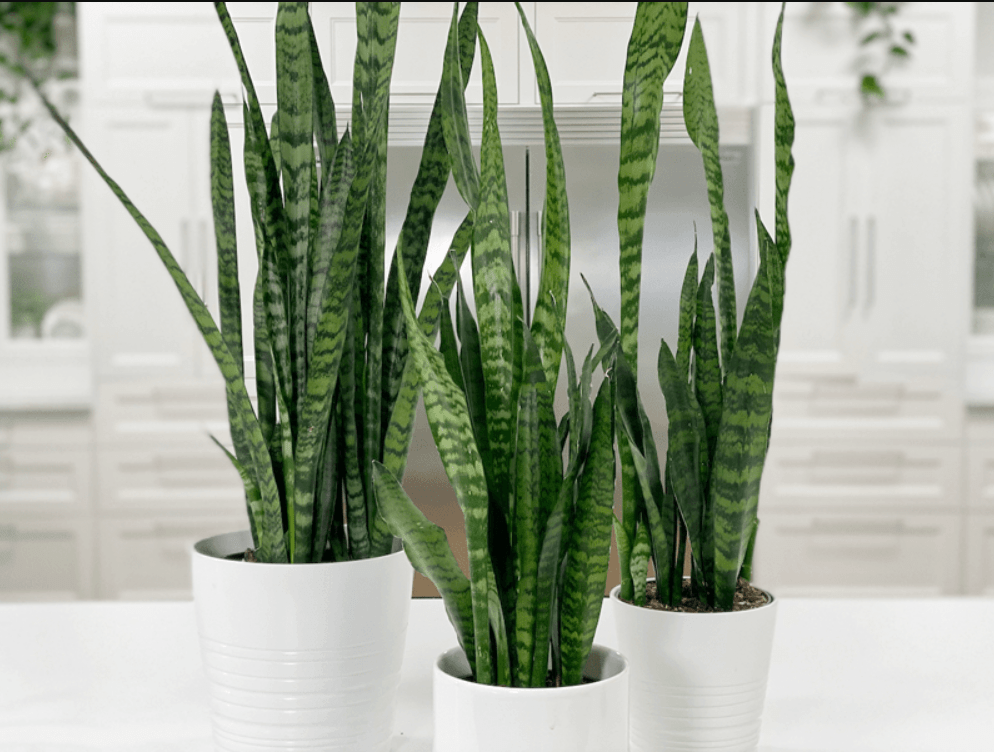
Here are some other snake plants that may do well outdoors depending on your climate:
- Bird’s Nest Snake Plant (Sansevieria hahnii):This popular variety has clusters of short, rounded leaves that grow outward from a central rhizome. However, some varieties can tolerate full sun in cooler climates.
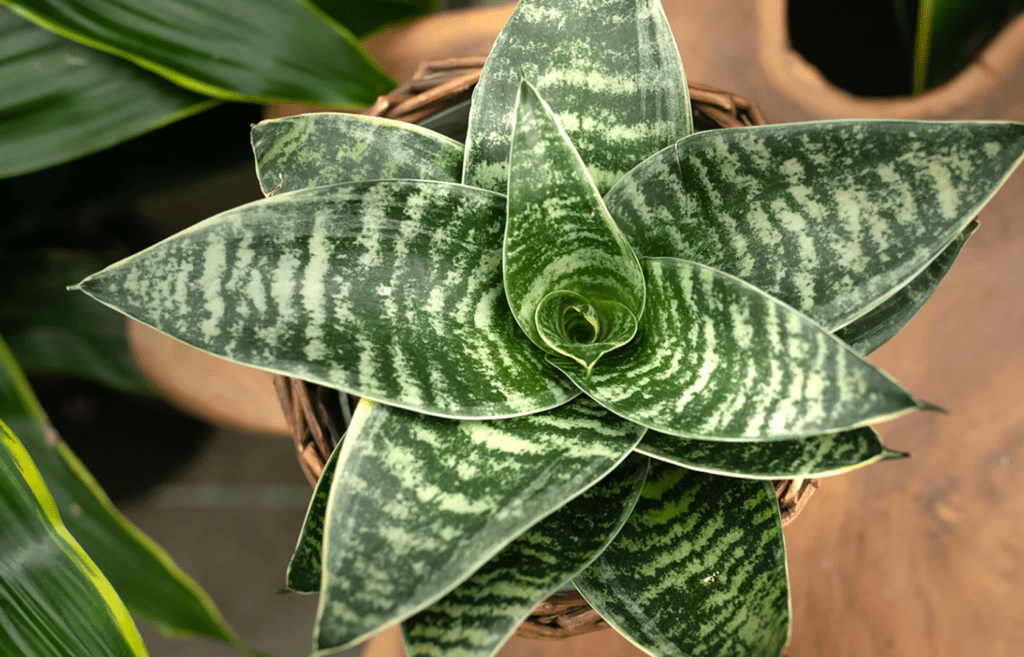
- Sansevieria pinguicula:This variety has wide, flat leaves that are dark green with a lighter green marbled pattern.
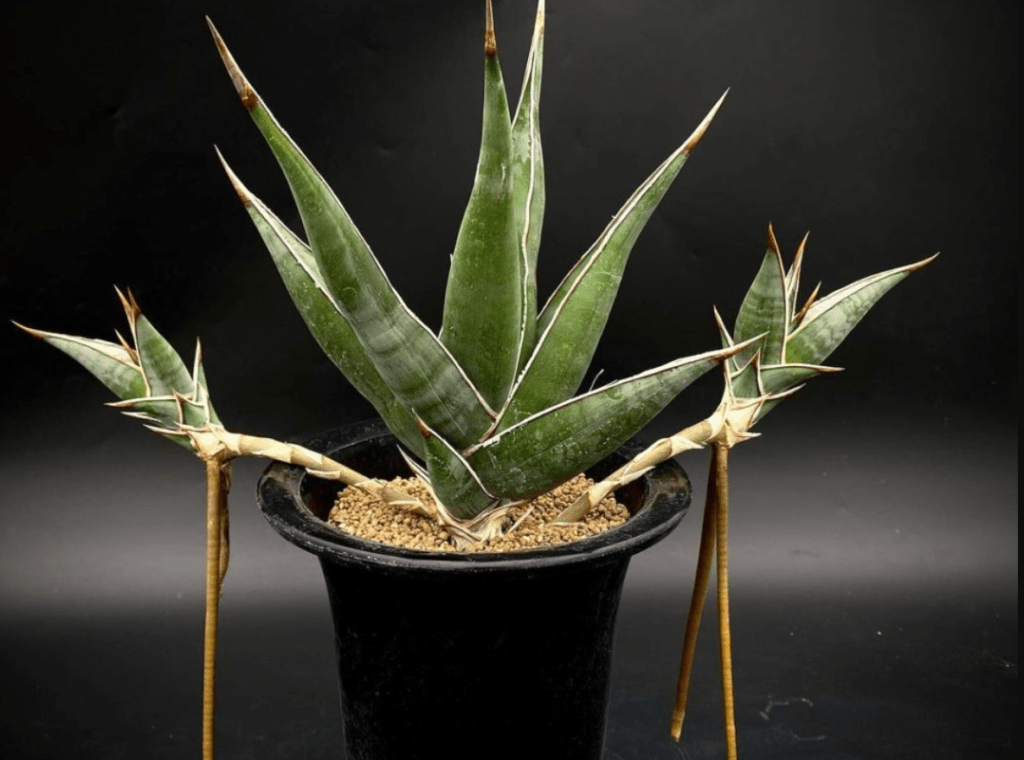
- Sansevieria masoniana:This variety has tall, upright leaves that are light green with dark green stripes.
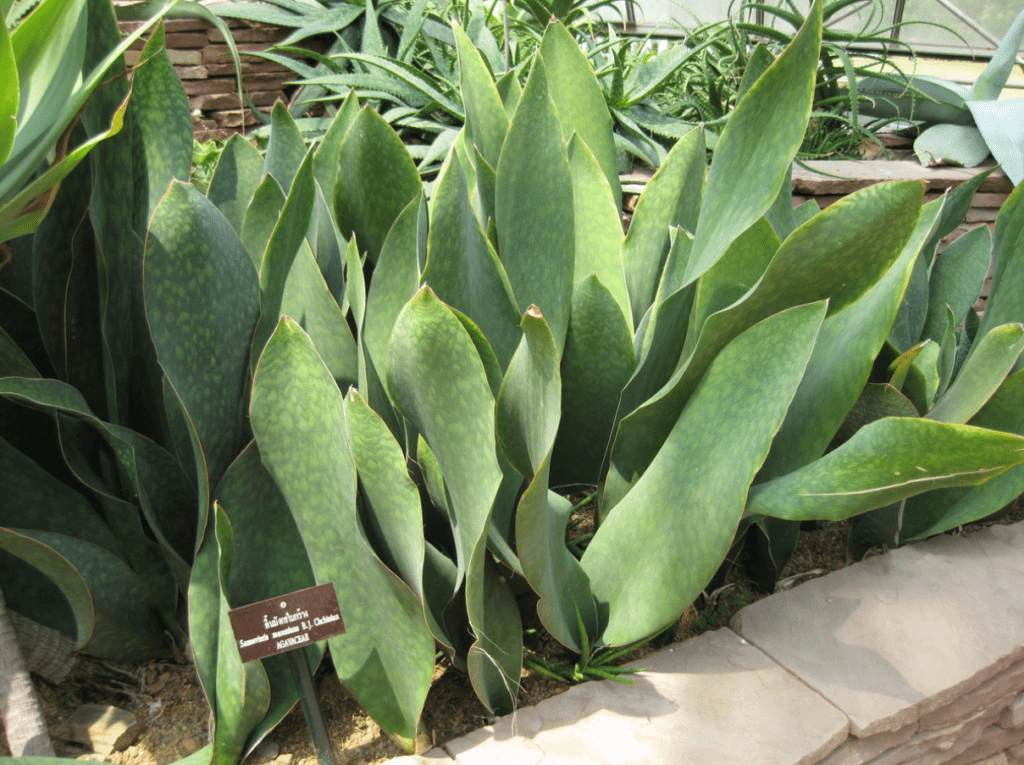
When choosing an outdoor snake plant, it is important to consider your climate and the amount of sunlight the plant will receive. Snake plants are generally tolerant of a wide range of conditions, but they will not do well in very cold weather or in areas with constantly wet soil.
Caring for Outdoor Snake Plants
Snake plants are renowned for their low maintenance needs indoors, and the good news is, they translate well outdoors too! But even these tough succulents require some basic care to ensure they flourish in your garden. Here’s a helpful guide to keep your outdoor snake plant thriving:
Watering Wisely:
- Hydration Needs: Remember, snake plants are succulents and store water in their leaves.
- Frequency: Watering frequency will depend on factors like climate, sun exposure, and pot size. Generally, you’ll need to water less frequently outdoors than indoors. Reduce watering significantly during cooler months.
- Drainage is Key: Ensure your planting pot or garden bed has excellent drainage to prevent waterlogging, which can lead to root rot.
Sun Salutations (or Shade Retreats):
- Right Light, Right Growth: As discussed earlier, different snake plant varieties have varying sun preferences. Cylindrical snake plants (Sansevieria cylindrica) thrive in full sun to partial shade, while Zeylanica varieties (Sansevieria zeylanica) prefer the dappled light of partial shade.
- Observe and Adjust: Pay attention to your plant’s response to its location. Leaf scorching might indicate too much sun, while slow growth could suggest insufficient light.
Feeding for Success (Optional):
- Less is More: While snake plants aren’t heavy feeders, a very diluted application of balanced fertilizer during the active growing season (spring and summer) can provide a slight boost.
- Organics Welcome: Consider using organic fertilizers or compost tea for a more natural approach.
Winter Considerations (if applicable):
- Protecting Your Investment: While some snake plant varieties can tolerate light frost, it’s best to err on the side of caution. If you live in a region with freezing temperatures, bring container-grown plants indoors for the winter.
- Mulch Magic: For in-ground snake plants, apply a layer of mulch around the base in fall to help insulate the roots from the cold.
Maintaining Beauty:
- Pruning Power: Snake plants generally require minimal pruning. However, you can occasionally remove any dead, diseased, or damaged leaves to maintain a neat appearance and promote air circulation. Always use sterilized pruning shears to avoid harming the plant.

Additional Tips:
- Repotting Gracefully: For container-grown snake plants, repot every 2-3 years or when the roots outgrow the pot. Choose a container only slightly larger than the current one to prevent overwatering issues.
- Enjoy the Journey: Observe your outdoor snake plant and adjust your care routine as needed. The more you understand its specific needs, the better equipped you’ll be to keep it thriving for years to come.
By following these simple care tips, your outdoor snake plant will reward you with its architectural beauty and low-maintenance charm, adding a touch of modern elegance to your garden year-round.
Creative Ways to Display Outdoor Snake Plants
Snake plants, with their architectural form and striking foliage, are no longer confined to the indoors. These versatile succulents can add a touch of modern elegance and year-round visual interest to your outdoor space. But how do you showcase these unique plants in a way that complements your garden design? Look no further! Here are some creative ways to display your outdoor snake plants:
Container Magic:
- Patios and Decks: Snake plants in stylish pots instantly elevate patios and decks. Choose bold, geometric containers that complement the architectural form of the plant. Terracotta pots with a weathered patina create a rustic charm, while sleek, glazed ceramic pots add a touch of modern sophistication.
- Tiered Oasis: Create a vertical display by utilizing tiered planters or placing containers of varying heights on plant stands. This adds visual interest and allows you to showcase different snake plant varieties with contrasting heights and textures.
- Color Coordination: Play with color! Snake plants with green and yellow variegations look stunning in turquoise or mustard yellow pots. For a bolder statement, pair a deep purple snake plant with a bright orange container.
Playing with Borders and Edgings:
- Modern Edging: Low-growing varieties like Sansevieria zeylanica create a clean and modern border along walkways or garden beds. Plant them in a single row for a minimalist look, or stagger them for a more dynamic effect.
- Mixed Media: Combine snake plants with other low-growing succulents or ornamental grasses for a textural contrast. Blue fescue grass with its fine, blue foliage pairs beautifully with the upright form of snake plants.
Dramatic Plantings:
- Focal Point Power: Snake plants can be stunning focal points in your garden. Plant multiple specimens of the same variety close together in a designated area. This creates a bold and dramatic statement, especially with taller varieties like Sansevieria cylindrica.
- Desert Flair: Snake plants thrive in xeriscapes and rock gardens. Their architectural form and drought tolerance make them ideal companions for cacti and other succulent plants. Use crushed rock or gravel as mulch for a true desert aesthetic.
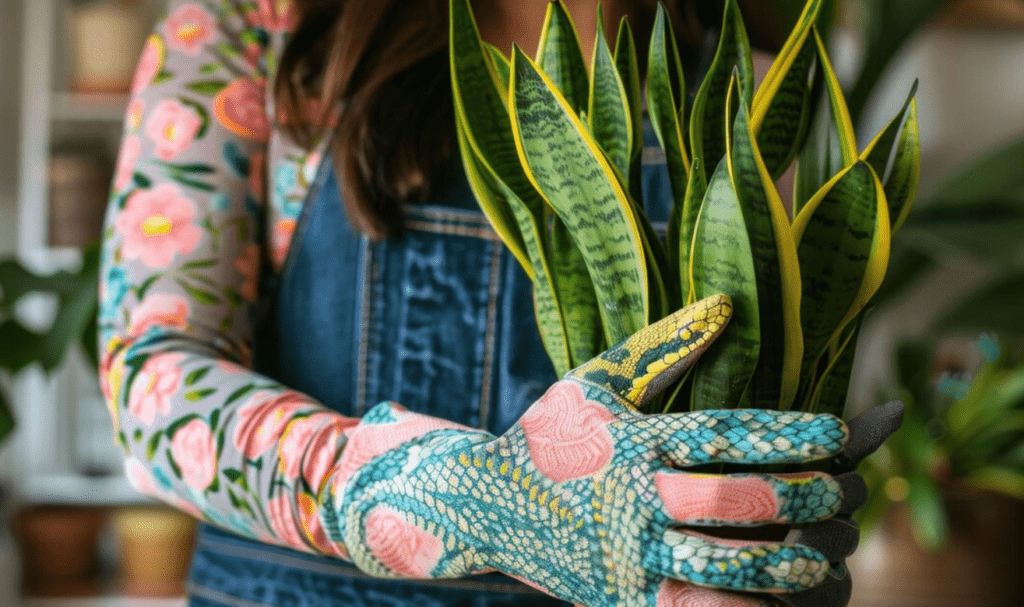
Unexpected Accents:
- Hanging Baskets (with Caution): This might seem unconventional, but certain snake plant varieties, like Sansevieria pinguicula with its cascading leaves, can work well in hanging baskets. Crucially, ensure the basket has excellent drainage and avoid overwatering.
- Living Wall Accents: For a unique vertical element, plant snake plants in shallow pockets on a vertical wall feature. This is a creative way to incorporate them into patios, balconies, or even fences.
Remember:
- Variety is Key: When choosing a display method, consider the size and variety of your snake plant. Taller varieties like Sansevieria cylindrica work well as focal points, while shorter varieties like Sansevieria hahnii are ideal for borders or container plantings.
- Sun Preferences: Not all snake plants are created equal when it comes to sun exposure. Refer back to your chosen variety’s needs to ensure it thrives in its designated location.
- Drainage Matters: Excellent drainage is crucial for outdoor snake plants. Ensure proper drainage holes in containers and choose well-draining potting mix or soil for in-ground plantings.
By letting your creativity flow and considering these display ideas, you can transform your outdoor space with the unique beauty and low-maintenance charm of outdoor snake plants. So, unleash your inner designer and create a dazzling display that complements your garden’s style and allows your snake plants to truly shine!
Common Issues and How to Solve Them
While known for their resilience, even outdoor snake plants can encounter occasional problems. Here’s a quick guide to identify common issues and their solutions:
Problem:
Brown Leaves
- Cause: The most likely culprit is overwatering. Snake plants store water in their leaves, and excess moisture can lead to rot.
- Solution: Reduce watering frequency and allow the soil to dry completely between waterings.
- Additional Tips: Remove any mushy or brown leaves to prevent the spread of rot. Ensure your pot or garden bed has excellent drainage.
Yellowing Leaves
- Cause: There are two main possibilities. Insufficient light can cause yellowing, particularly for varieties that prefer full sun. Alternatively, extreme heat stress can also lead to yellowing leaves.
- Solution: For light-starved plants, consider relocating them to a brighter spot that receives more sun according to their variety’s needs. For heat stress, provide some afternoon shade, especially during the hottest part of the day.
Mushy Stem or Base
- Cause: This is a clear sign of root rot caused by overwatering.
- Solution: Unfortunately, severe root rot might be fatal. However, if caught early, you can try to save the plant. Unpot the snake plant immediately and remove any mushy or rotten roots. Repot the plant in fresh, well-draining potting mix and adjust your watering habits.
Scorched Leaves
- Cause: Excessive direct sunlight, especially during the hottest part of the day, can scorch the leaves of snake plants that prefer partial shade.
- Solution: Relocate the plant to a location with more dappled shade or filtered sunlight. If this isn’t possible, consider providing shade during the peak sun hours.
Pests or Diseases
- Cause: Outdoor snake plants are generally pest and disease resistant. However, in rare cases, they might be susceptible to mealybugs or fungal diseases.
- Solution: For mealybugs, isolate the plant and treat it with insecticidal soap or neem oil spray. For fungal diseases, identify the specific issue and use an appropriate fungicide according to label instructions.
Remember: Prevention is always better than cure. By providing your outdoor snake plant with the appropriate amount of light, water, and well-draining soil, you can minimize the risk of encountering these problems. Regularly observe your plant and address any concerns promptly to keep it thriving throughout the season.
Frequently Asked Questions (FAQ)
Yes, snake plants can thrive outdoors in climates with mild temperatures and indirect sunlight.
Snake plants prefer temperatures between 55°F and 85°F (13°C to 29°C) and should be protected from frost.
Water snake plants sparingly, allowing the soil to dry out between waterings. Typically, watering every 2-3 weeks is sufficient.
Well-draining soil, such as cactus or succulent mix, is ideal to prevent root rot.
Fertilize outdoor snake plants once a month during the growing season with a balanced, diluted fertilizer.
While snake plants can tolerate some direct sunlight, they prefer indirect light or partial shade to avoid leaf burn.
Move plants indoors or cover them with frost cloths in colder climates to protect against freezing temperatures.
Yes, snake plants are mildly toxic to pets if ingested, so keep them out of reach of animals.
Snake plants can be propagated by division or leaf cuttings. Plant divisions or cuttings in well-draining soil and keep them in a shaded area until established.
